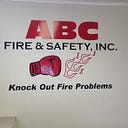How to Conduct a Fire Extinguisher Inspection
Introduction
Fire extinguishers are an essential component of building safety, providing a quick and effective means of extinguishing small fires. However, fire extinguishers must be properly maintained and inspected to ensure they are functioning correctly and ready to use in the event of a fire. In this article, we will discuss how to conduct a fire extinguisher inspection, including the steps involved, common inspection requirements, and best practices.
Steps for Conducting a Fire Extinguisher Inspection:
Step 1: Determine the Frequency of Inspections
The first step in conducting a fire extinguisher inspection is to determine the frequency of inspections. Fire extinguishers should be inspected monthly by a trained individual, and a more thorough inspection should be conducted annually by a qualified professional.
Step 2: Conduct a Visual Inspection
The next step is to conduct a visual inspection of the fire extinguisher. This should include checking for any signs of damage or tampering, such as dents, leaks, or broken seals. The pressure gauge should also be checked to ensure that the extinguisher is properly charged.
Step 3: Check the Expiration Date
Fire extinguishers have a limited lifespan and must be replaced when they expire. The expiration date should be checked and noted during the inspection.
Step 4: Inspect the Operating Mechanism
The operating mechanism of the fire extinguisher should be inspected to ensure that it is functioning correctly. This includes checking the pull pin, the nozzle, and the hose for any signs of damage or blockages.
Step 5: Check the Type of Extinguisher
Finally, the type of extinguisher should be checked to ensure that it is appropriate for the hazards present in the area. Different types of extinguishers are designed to extinguish different types of fires, so it is important to ensure that the correct type of extinguisher is available.
Common Inspection Requirements:
There are several common inspection requirements that should be followed when conducting a fire extinguisher inspection. These include:
- The inspection should be conducted by a trained individual or a qualified professional.
- The inspection should be conducted at regular intervals, including monthly visual inspections and annual thorough inspections.
- The fire extinguisher should be checked for any signs of damage or tampering, such as dents, leaks, or broken seals.
- The pressure gauge should be checked to ensure that the extinguisher is properly charged.
- The expiration date should be checked and noted during the inspection.
- The operating mechanism of the fire extinguisher should be inspected to ensure that it is functioning correctly.
- The type of extinguisher should be checked to ensure that it is appropriate for the hazards present in the area.
Best Practices:
To ensure that fire extinguishers are properly maintained and inspected, it is important to follow best practices. These include:
- Training personnel on the proper use and inspection of fire extinguishers.
- Keeping a record of all inspections, including the date, inspector, and any notes or comments.
- Having a plan in place for the regular replacement of expired or damaged fire extinguishers.
- Providing clear and visible signage indicating the location of fire extinguishers.
- Ensuring that fire extinguishers are easily accessible and not blocked by any objects.
FAQ:
- Q: Who should conduct fire extinguisher inspections?
A: Fire extinguisher inspections should be conducted by a trained individual or a qualified professional.
2. Q: How often should fire extinguishers be inspected?
A: Fire extinguishers should be inspected monthly by a trained individual, and a more thorough inspection should be conducted annually by a qualified professional.
In conclusion
Fire extinguisher inspections are a crucial part of building safety and should be conducted regularly to ensure that the extinguishers are in good working order and ready to use in the event of a fire. Inspections should be conducted at regular intervals, including monthly visual inspections and annual thorough inspections by a qualified professional. During inspections, personnel should check for any signs of damage or tampering, the pressure gauge should be checked to ensure that the extinguisher is properly charged, and the expiration date should be noted. By following best practices and ensuring that fire extinguishers are properly maintained, building owners and occupants can help prevent small fires from becoming major disasters.
